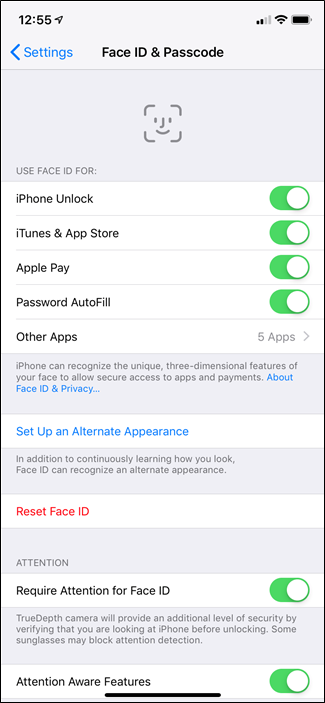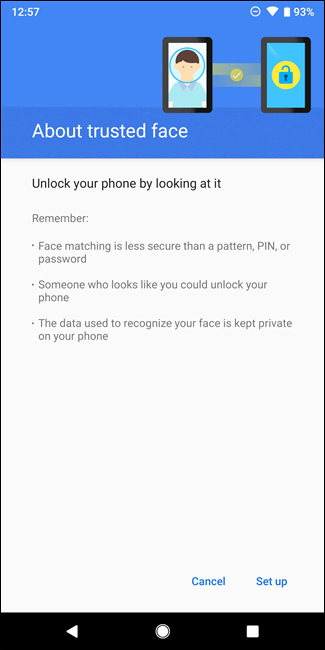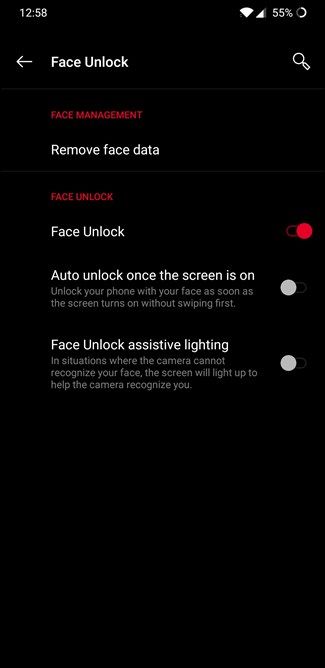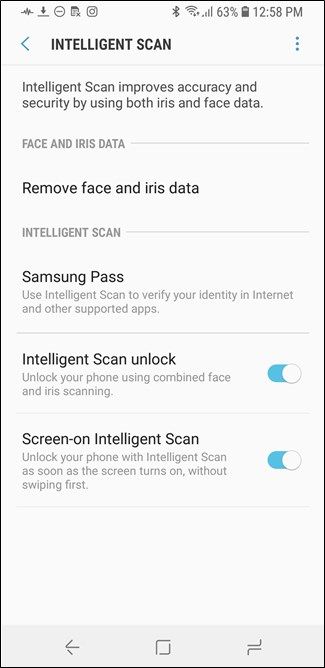Quick Links
Unlocking your phone using your face is the new hotness, mostly thanks to Apple's Face ID. Android has had a similar feature since 2015 called Trusted Face, but it's not even close to the same thing.
How Does Face ID Work?
Apple put a lot of tech into getting Face ID to work in a way that was not only intuitive and accurate but also incredibly secure. In short, it creates a 3D map of your face by using a combination of infrared light and image capture. Forbes did a great job of explaining this:
It uses infrared (IR) light to illuminate your face while capturing the images, to work day or night, outside or indoors. IR spans wavelengths of electromagnetic radiation (known commonly as 'light') just beyond the visible spectrum, so iPhone X's display won't dazzle you in the dark.
In more layman's terms, it uses a variety of sensors combined with the device's camera to create a 3D map of what you really look like---that's why it works in the dark or light, with a hat on, with or without glasses, and everything in between. All that tech is the reason the iPhone X series has a notch---that's where the hardware sits.
In other words, it uses so much more than just a picture.
How Does Trusted Face Work?
By contrast, Android's Trusted Face feature (formerly called Face Unlock) is nothing more than a stored picture of your face. In fact, you can fool it pretty easily with a printed picture. That's bad.
The exception to the rule here is when a phone combines Trusted Face/Face Unlock with another form of biometric verification---like the iris scanner found on modern Samsung Galaxy phones. But, even then, this is only used a security measure to unlock your phone; it can't be used to log in to secure apps like banking software, credit monitoring apps, or anything else that you can unlock with a fingerprint.
Why? Because it's not secure enough. Where apps accept Face ID as an actual security feature, that's not the case for Android. In fact, the APIs don't even exist for this yet.
Better Face Unlock for Android is Coming (Probably)
Now, all that said, Google realizes that a genuinely secure face unlock is something people want---especially those who have used Face ID (and know how awesome it is). The word on the street is that Android Q---the forthcoming version of Android due out later this year---will offer a feature comparable to Face ID.
Of course, for it to be as secure as Face ID, it's going to need the hardware support as well. IR scanning and depth mapping are requirements for the feature to truly be secure, so phones that don't have this hardware already (read: pretty much every phone out right now) won't be compatible with his improved feature even if they do get updated to Android Q.
It's worth noting that this is just theory at the time---a few exposed lines of code simply suggest improved Trusted Face (which could potentially go by a different name if this turns out to be true) in Android Q. We won't really know until Google announces Q, which won't be till much later this year.
But in the meantime, remember that Trusted Face/Face Unlock is nothing more than a convenience and doesn't offer genuine security.





